The Intel SSD DC P3700 Review Part 2: NVMe on Client Workloads
by Anand Lal Shimpi on June 10, 2014 12:07 AM EST- Posted in
- Storage
- SSDs
- Intel
- Intel SSD DC P3700
- NVMe
Random Read/Write Speed
The four corners of SSD performance are as follows: random read, random write, sequential read and sequential write speed. Random accesses are generally small in size, while sequential accesses tend to be larger and thus we have the four Iometer tests we use in all of our reviews.
Our first test writes 4KB in a completely random pattern over an 8GB space of the drive to simulate the sort of random access that you'd see on an OS drive (even this is more stressful than a normal desktop user would see). We perform three concurrent IOs and run the test for 3 minutes. The results reported are in average MB/s over the entire time.

Our enterprise look at the P3700 focused on steady state 4KB random write performance, but surprisingly enough our short burst/8GB LBA space testing puts the P3700 at a very similar performance level. Here the P3700 is more than twice as fast as the closest SATA competitor, which is amazing despite the low queue depth of our test. I also included the old X25-M G2 to show just how far we've come - the P3700 is nearly 15x the speed of Intel's first generation MLC SSD controller.
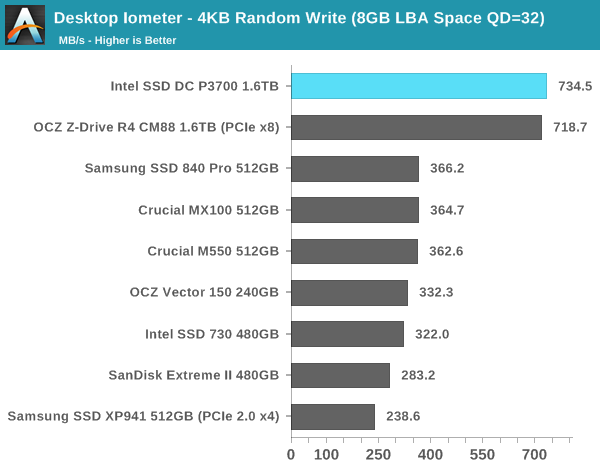
At a higher queue depth the Z-Drive R4 is able to catch up to the P3700, but being able to deliver excellent random IO performance even at low queue depths is a staple of a good client drive.
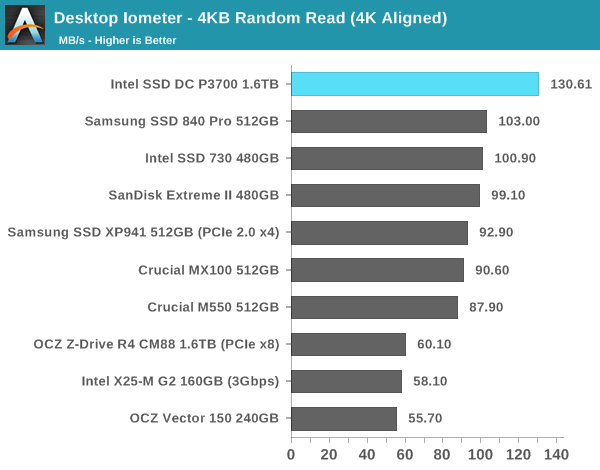
Random read performance is better than anything else here, but there's a limit to how much parallelism you can extract from a low queue depth random read workload.
Sequential Read/Write Speed
To measure sequential performance we run a 1 minute long 128KB sequential test over the entire span of the drive at a queue depth of 1. The results reported are in average MB/s over the entire test length.
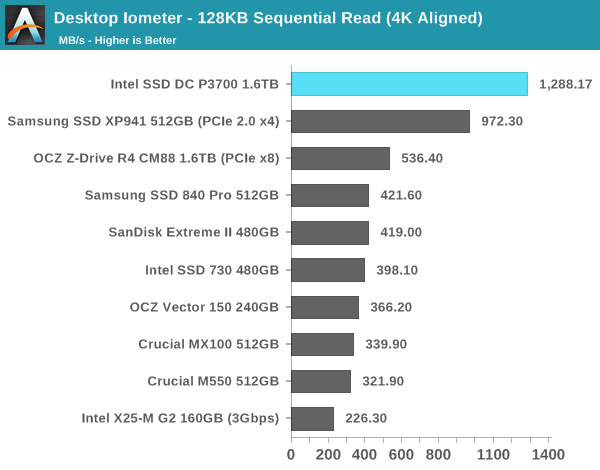
Once again we see the P3700 does extremely well at low queue depths, here its sequential read performance is substantially better than anything else.
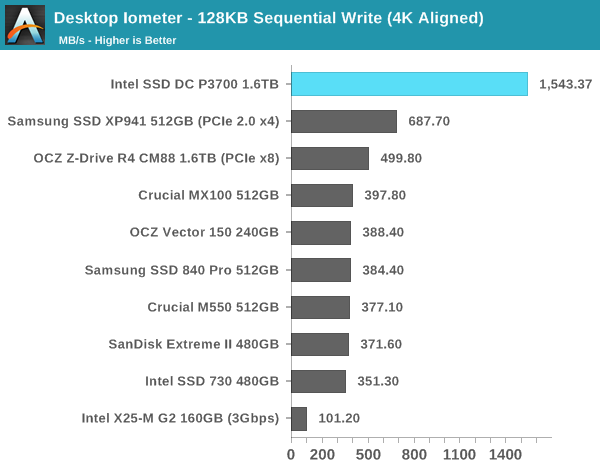
Sequential writes are even more impressive. We typically never see this sort of performance at a queue depth of 1. The P3700's 18-channel controller and firmware do a good job of splitting up write requests across as many parallel die as possible. Once again comparing the P3700 to the old X25-M G2 we see 15x the performance in 6 years.
AS-SSD Incompressible Sequential Read/Write Performance
The AS-SSD sequential benchmark uses incompressible data for all of its transfers. The result is a pretty big reduction in sequential write speed on SandForce based controllers. At a higher queue depth the P3700's performance scales even further. It used to only be possible to see these numbers on PCIe SSDs that leveraged multiple controllers.
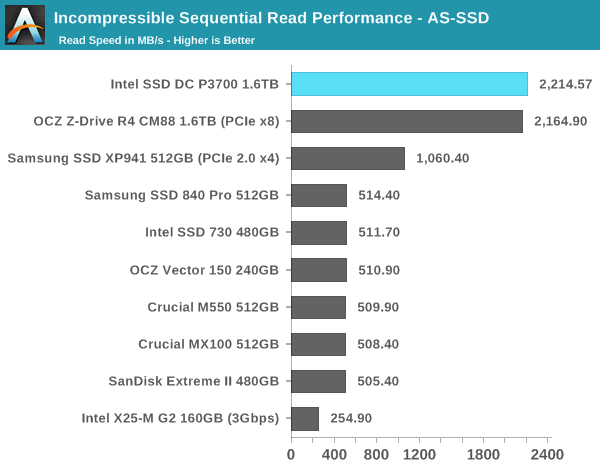
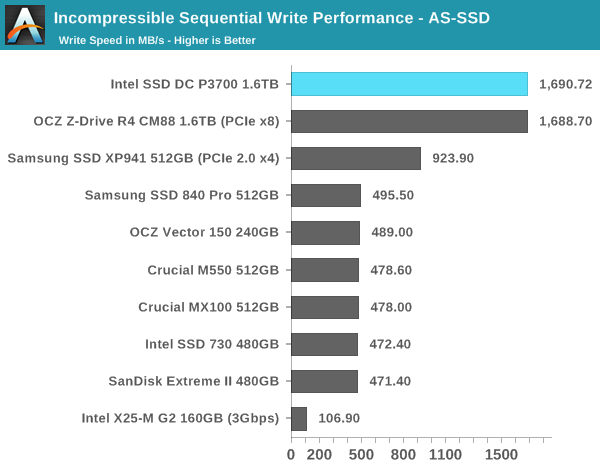










36 Comments
View All Comments
alacard - Tuesday, June 10, 2014 - link
Very grateful that you posted this second look. Very interesting results. Now we just NEED a review of Fusion IO's Octal drive and my life will be complete. Make it happen Anand!extide - Tuesday, June 10, 2014 - link
x2 on both! Love this drive though!lukewayne - Tuesday, June 10, 2014 - link
Anand,Great content as usual.
Might want to consider using the same scale on the graphs for each drive, clicking from P3700 to S3700 on the first graph, it was easy to miss the change in scale on the vertical axis. Would be easier to see difference if higher was faster across all drives.
In any event, I do really like this way of showing comparison data. keep up the good work!
nfriedly - Tuesday, June 10, 2014 - link
I was going to say the same thing - my initial impression was that it was about on par with the other drives.brucek2 - Tuesday, June 10, 2014 - link
Same. Especially true when the units are a one with a lot of zeroes but no commas, which makes it easy to mistake say 100,000 for 1,000,000 in the first place. I'd say go wild and go for both consistent scale AND commas!mtoma - Tuesday, June 10, 2014 - link
Is this drive bootable?althaz - Tuesday, June 10, 2014 - link
In OSX and Linux yes, but AFAIK not yet in Windows.hpvd - Tuesday, June 10, 2014 - link
sure no windows booting?maybe one simply have to have the right windows version (8.1 or server) and the right driver...
see
"NVM Express Boot Support added to Windows 8.1 and Windows Server 2012 R2"
http://www.nvmexpress.org/blog/nvm-express-boot-su...
juhatus - Tuesday, June 10, 2014 - link
Quote from link: "Using the Windows inbox driver requires the platform to have the appropriate BIOS support and the device is not an eDrive implementation."So BIOS upgrade should do it atleast? Here's hoping they'll fix BIOS´s
Sunburn74 - Tuesday, June 10, 2014 - link
Being bootable is a big deal and a must have feature